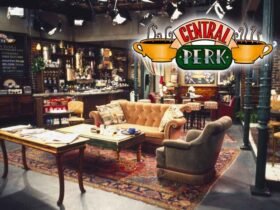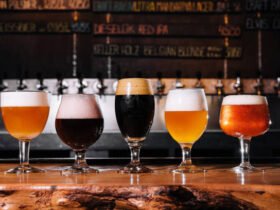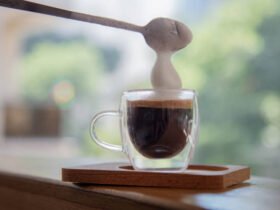Coffee lovers often find themselves in a delightful dilemma when choosing between a latte and a cappuccino. Both beverages are rich, comforting, and delicious, but what exactly sets them apart? In this blog post, we’ll break it all down for you, making it easier to decide which coffee drink best suits your taste buds and lifestyle.
Whether you’re a casual drinker, an aspiring barista, or someone who simply enjoys understanding their favorite beverages, this guide will walk you through the key differences between lattes and cappuccinos. We’ll cover everything from their origins and ingredients to their preparation methods and flavor profiles.
The Origins of Latte and Cappuccino
A Brief History of the Latte
The word “latte” comes from the Italian phrase “caffè latte,” which translates to “milk coffee.” This beverage has its roots in European coffee culture, where it quickly gained popularity due to its creamy texture and mild flavor. The modern latte, which includes a shot of espresso topped with steamed milk and a thin layer of foam, first became popular in the United States in the 1980s.
The Birth of the Cappuccino
Cappuccino, on the other hand, has a more mysterious origin story. The name is believed to be derived from the Capuchin friars, whose brown robes resemble the color of the drink. This Italian classic consists of equal parts espresso, steamed milk, and milk foam. It made its debut in Italian coffee culture and spread across Europe before gaining global recognition.
Ingredients That Make the Difference
Espresso – The Heart of Both Drinks
Both lattes and cappuccinos start with a shot of espresso. This concentrated coffee is made by forcing hot water through finely-ground coffee beans under high pressure. The bold, rich flavor of espresso forms the backbone of both drinks, providing their distinctive coffee taste.
Milk – The Game Changer
Milk plays a crucial role in differentiating lattes from cappuccinos. In a latte, about 8-10 ounces of steamed milk is added to a shot of espresso, resulting in a creamy, milder coffee experience. Cappuccinos, however, feature less steamed milk (around 5 ounces) and are topped with a thick layer of milk foam. This creates a more balanced flavor with a frothier texture.
Foam – The Final Touch
While both beverages include milk foam, the amount and consistency differ. Lattes have a thin layer of foam, whereas cappuccinos boast a generous, airy topping. This difference in foam not only affects the texture but also influences the overall drinking experience.
The Art of Preparation
Crafting the Perfect Latte
To prepare a latte, baristas start by pulling a shot of espresso. They then steam milk to create a smooth, velvety texture, which is poured over the espresso. Finally, a thin layer of milk foam is added on top. Skilled baristas often create intricate latte art using the foam, adding a touch of visual appeal to the drink.
Mastering the Cappuccino
Cappuccinos require a bit more finesse. After pulling a shot of espresso, the milk is steamed to create both liquid and froth. Baristas then pour the steamed milk into the espresso, followed by a thick layer of foam. The result is a well-balanced drink with a strong coffee flavor and a frothy, satisfying texture.
Flavor Profiles and Texture
Latte – Smooth and Creamy
Lattes are known for their smooth, creamy texture and mild coffee flavor. The generous amount of steamed milk tempers the boldness of the espresso, making it a popular choice for those who prefer a less intense coffee experience. The thin layer of foam adds a subtle, velvety finish.
Cappuccino – Bold and Frothy
Cappuccinos, on the other hand, offer a more robust coffee taste. The equal parts espresso, steamed milk, and foam create a balanced flavor profile, with the frothy topping adding a delightful texture. This makes cappuccinos a favorite among those who enjoy a stronger coffee experience with a bit of foam to lighten it up.
Caffeine Content
How Much Caffeine is in a Latte?
Since lattes contain a single shot of espresso, their caffeine content is relatively moderate—typically around 63 milligrams per serving. However, some variations, like double shot lattes, can increase the caffeine content significantly.
How Much Caffeine is in a Cappuccino?
Cappuccinos also contain a single shot of espresso, making their caffeine content similar to that of a latte. The foam and smaller amount of steamed milk do not significantly impact the caffeine level, so you can expect around 63 milligrams per cup.
Health Considerations
Calorie Count
Lattes tend to be higher in calories due to the larger amount of milk. A standard latte can contain anywhere from 100 to 200 calories, depending on the type of milk used. Choosing low-fat or plant-based milk can help reduce the calorie count.
Nutritional Benefits
Both lattes and cappuccinos offer some nutritional benefits, primarily from the milk. They provide essential nutrients like calcium, protein, and vitamins. However, it’s essential to be mindful of added sugars and flavored syrups, which can increase the calorie and sugar content.
Popular Variations
Flavored Lattes
Lattes are incredibly versatile and can be customized with various flavors. Popular options include vanilla, caramel, and mocha lattes. These variations often incorporate flavored syrups or sauces, enhancing the drink’s taste and appeal.
Specialty Cappuccinos
Cappuccinos also have their share of variations. Some popular choices include the dry cappuccino, which features less steamed milk and more foam, and the wet cappuccino, which has more steamed milk and less foam. These variations cater to different texture and flavor preferences.
Choosing the Right Drink for You
Morning Pick-Me-Up
If you’re looking for a gentle start to your day, a latte might be the perfect choice. Its creamy texture and mild flavor make it an excellent morning beverage that pairs well with breakfast.
Afternoon Energy Boost
For an afternoon pick-me-up, a cappuccino offers a balanced, robust coffee experience that can help you power through the rest of your day. The frothy texture adds a delightful touch to your coffee break, making it a refreshing option.
Making Lattes and Cappuccinos at Home
Essential Equipment
To make lattes and cappuccinos at home, you’ll need an espresso machine, a milk frother, and a grinder. These tools can help you achieve the perfect espresso shot and steamed milk consistency, ensuring a café-quality drink every time.
Tips for Home Brewing
- Use fresh, high-quality coffee beans for the best flavor.
- Practice steaming milk to achieve the desired texture.
- Experiment with different milk types and flavors to find your perfect combination.
FAQs on Lattes and Cappuccinos
What is the main difference between a latte and a cappuccino?
The primary difference lies in the milk-to-foam ratio. Lattes have more steamed milk and less foam, while cappuccinos feature equal parts espresso, steamed milk, and foam.
Which drink is stronger, a latte or a cappuccino?
Cappuccinos generally have a stronger coffee flavor due to the smaller amount of milk and more balanced ratio of espresso to foam.
Can I customize my latte or cappuccino?
Yes, both drinks are highly customizable. You can add flavored syrups, experiment with different types of milk, or adjust the milk-to-foam ratio to suit your taste preferences.
Conclusion
Both lattes and cappuccinos offer unique coffee experiences, each with its distinct flavor profile and texture. Understanding the differences between these two beloved beverages can help you make an informed choice the next time you’re at a coffee shop or brewing at home.
Ready to explore more about coffee and elevate your brewing skills? Join our community of coffee enthusiasts, where we share tips, recipes, and exclusive deals to help you make the perfect cup every time. Happy sipping!





